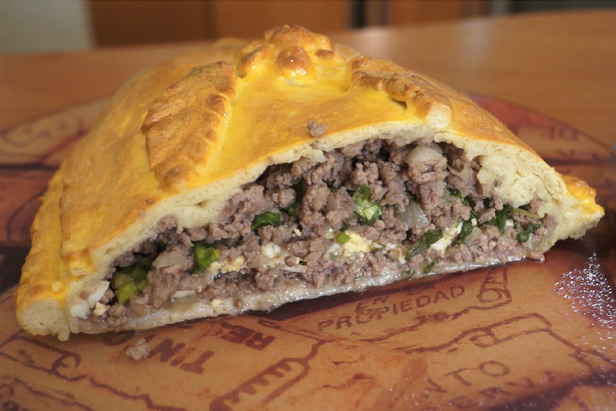Delicious TV: Kulebyaka, traditional savory pie
Kulebyaka is a kind of closed pie. The word stems from the Old Slavonic verb kulebyachit’, which meant to hand-roll, crumple, bend or fold dough. As such, this verb encompasses the full spectrum of activities that take place when making dough for the kulebyaka, which needs special effort and thoroughness without which the quality of this treat would surely suffer. You’ll often see in popular publications that the kulebyaka is a corrupted form of the German ‘Kohlgeback’, a word that means a cabbage pastry. However, this version is mistaken. Kulebyakas are absolutely not cabbage pastries. Instead, they primarily contain meat, fish, and/or mushrooms.
Kulebyakas are usually long, skinny, and tall pastries, although homemade versions can come in any shape and size.
Kulebyaka dough is yeasty, buttery sourdough (with a minimum of 40 grams of yeast for every kilogram of dough). After being baked, the dough shouldn’t be thick, but it should be firm enough to support a large layer (or layers) of filling(s).
The filling is always hard and based on one kind of food—meat, fish, mushrooms, or cabbage—that can have rice, hard-boiled eggs, or onions added to it.
Kulebyakas have enjoyed worldwide fame since the 19th century. French chefs working in Russia at this time modified the kulebyaka’s recipe to present it as haute cuisine. So, instead of using yeast dough, they started to use more delicate “French” dough. In addition, wild game, mushrooms, rice, and salmon started to replace the most popular fillings. Kulebyaka is usually served as a dish in itself, but can also be served with all kinds of soups and broths.
 |
2 eggs 2 onions 600 grams of beef A bunch of green onions A cup of flour Yeast Milk Salt, pepper |
How we make it?
1) We’ll start with the dough. It’s better to use dough with yeast. You can read in more detail in the pies video-tutorial.
2) We’ll use ground beef with onion and eggs as our filling. We're using beef on the bone so we can make a little broth that we’ll pour inside the kulebyaka to make it juicier. We’ll remove the meat from the bone and run it through the meat grinder.
3) Now we’ll cut the onion and fry it. We’ll fry the ground beef with the onions for just a few minutes. Meat will be cooked inside the pie.
4) Cut the boiled eggs.
5) Now it’s time to shape our pie. We’ll lay the filling in layers. First a layer of beef, then a layer of eggs, another layer of beef, onions, and beef once more. We’ll add a couple of spoonfuls of broth.
6) Form the borders and the layer of dough on top.
7) The last step is to brush the kulebyaka with egg yoke. Make some cuts on the sides to let steam out. We place the kulebyaka in the oven for 30-40 minutes at 200 degrees Celsius.
Take a look at our section The Russian Kitchen and leave your comments on Facebook
All rights reserved by Rossiyskaya Gazeta.